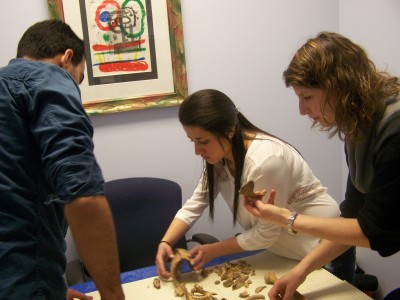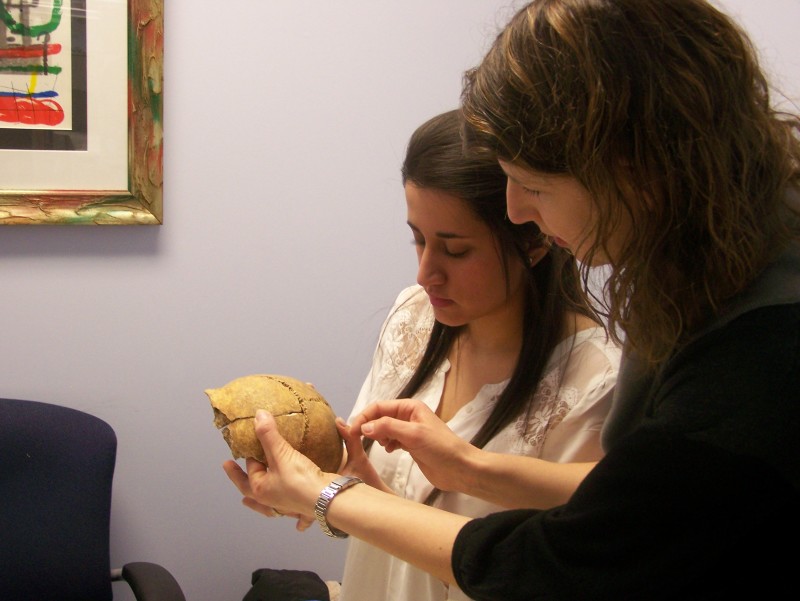STORY AND PHOTOGRAPHY BY ROBERT MOODIE
A new project at Sheridan will use 3D imaging technology to help students learn and conduct experiments for an upcoming course: Forensic Anthropology.
Sheridan has skeletal remains found in Austria on loan from Germany for teaching biological anthropology and the project has been putting these through 3D scanners since October. The project aims to preserve and catalogue the remains, as well as using the resulting 3D images in testing and classes to avoid harming the real thing.
The project won’t replace the traditional shelves and drawers of bones, says Dr. Jaime Ginter, a professor of anthropology at Sheridan. “That’s still very valuable for students to have hands on, applied experience,” she says. Taking the bone, picking it up and looking at it helps students learn about the person that the bone came from.
A lot can be learned from bones, too. Ginter says researchers can determine the age, sex, health and maybe even what that person did while they were alive.
“We’re doing the 3D scanning as another level of information that we can gather,” she says. Using the software, researchers can put bones back together as if they were connected by soft tissue, just like the artificial skeletons hanging in high school science classrooms.
The images also allow virtual testing such as cutting bones open in 3D space to take measurements and make observations, something that would destroy physical remains.

“The goal is to scan the remains of a young person, as well as an adult, so we have both of those sort of documents to work with,” Ginter says. While scans of adult remains can be found online, being able to work with the remains of a younger person is a unique, rare and fortunate thing.
The project will also use the information from scanning with 3D printers to produce replicas for use in the classroom.
In one course that Ginter is developing, students will be doing facial reconstruction by laying tissue on electronic models, as well as more traditional approaches by laying clay over a 3D printed model.
“We would never overlay plasticine and things like that over a real human skull or human bones but we can take that skull, scan it, print it, and then have that to try and get an idea of what that person looked like when they were living,” she says.
The remains at Sheridan are from a 16th- to 18th-century cemetery in the old city of Hall, in the Tyrol region of Austria, which was probably a moderate sized city, according to Ginter. She says the area the bones came from had multiple people buried in the same grave shaft, suggesting that it was used by common folks of the time. The remains are on loan from the State Collection of Anthropology and Palaeoanatomy in Munich.
It’s an ongoing project, Ginter says, and students in the Forensic Anthropology course will be entrusted with using the skills they develop in class to discover as much as they can about these people and who they were, as that is not yet known.
The Forensic Anthropology course will roll out in September and the applied methods course involving the facial reconstruction is slated for next winter.

Comments
One response to “The past, written in bone”
The Sheridan staff person responsible for all of the fine scanning work as well as the design and development of an upcoming e-teaching resource for the program is Song Ho Ahn. He is a 3D designer working in Digital Learning and Innovation in Sheridan’s Centre for Teaching and Learning. Song is an indispensable team member responsible for numerous innovative 3D and 2D learning objects being used in courses across the college. You might be interested in doing an article on his work.